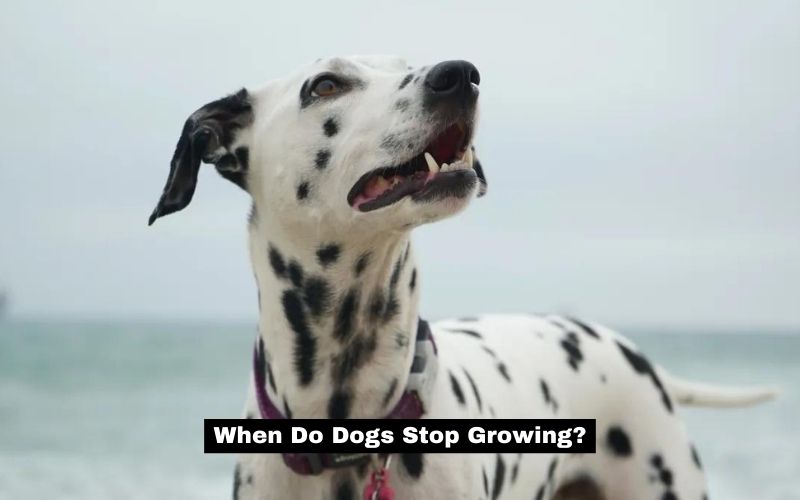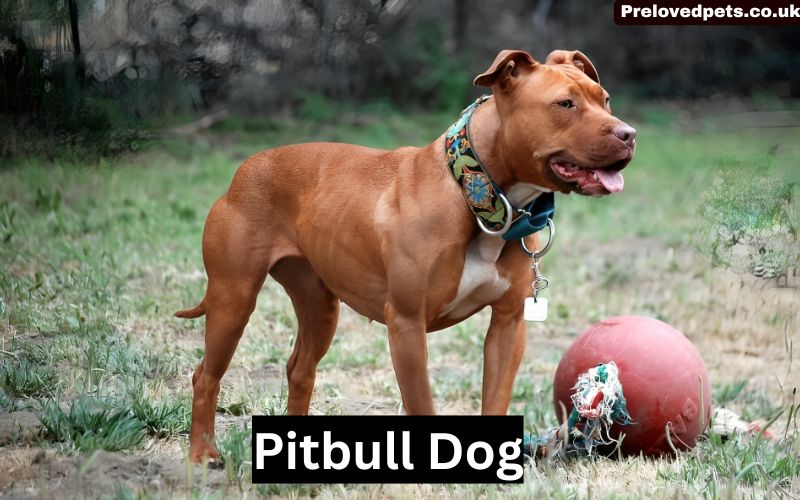Dogs grow at varying rates depending on their breed, genetics, diet, and overall health. For dog owners, understanding when their furry friends stop growing is essential for ensuring they provide the right care and support during their growth stages. This article will delve into the growth patterns of different dog breeds, the factors influencing their growth, and how to ensure a healthy development for your canine companion.
Understanding Canine Growth Phases
Dogs undergo several distinct growth phases from birth to adulthood. Each phase has its own characteristics and nutritional needs.
- Neonatal Period (0-2 weeks):
- Puppies are entirely dependent on their mother.
- Rapid physical development occurs, but they are still blind and deaf.
- Transitional Period (2-4 weeks):
- Puppies begin to open their eyes and ears.
- Start to develop basic motor skills and show interest in solid food.
- Socialization Period (4-12 weeks):
- Critical period for social development.
- Puppies learn from their mother, littermates, and human interaction.
- Juvenile Period (3-6 months):
- Rapid growth phase.
- Permanent teeth start to replace baby teeth.
- Puppies become more independent.
- Adolescent Period (6-18 months):
- Slower growth rate compared to the juvenile period.
- Behavioral changes due to hormonal changes.
- Sexual maturity is reached.
- Adulthood (18 months+ for small breeds, up to 2 years or more for large breeds):
- Growth plates close, signaling the end of physical growth.
- Continued mental and emotional development.
Growth Patterns Based on Breed Size
The rate at which dogs grow largely depends on their breed size. Dogs are typically classified into three size categories: small, medium, and large/giant breeds.
- Small Breeds (e.g., Chihuahuas, Pomeranians, Dachshunds):
- Generally reach full size by 6-8 months.
- Fast metabolism and rapid growth rates.
- Growth plates close early, leading to a quicker end to the growth phase.
- Medium Breeds (e.g., Beagles, Border Collies, Cocker Spaniels):
- Reach full size between 12-15 months.
- Moderate growth rate.
- Balanced dietary needs to support steady growth.
- Large/Giant Breeds (e.g., German Shepherds, Great Danes, Saint Bernards):
- Continue growing until 18-24 months or even longer.
- Slower growth rate.
- Special attention to diet to avoid rapid growth, which can lead to joint and bone issues.
Factors Influencing Growth
Several factors can influence how and when a dog stops growing:
- Genetics:
- Genetics play a pivotal role in determining the growth rate and final size of a dog.
- Pedigree and lineage can provide insight into growth patterns.
- Nutrition:
- Proper nutrition is critical for healthy growth.
- Puppies need a balanced diet rich in protein, fats, vitamins, and minerals.
- Overfeeding or underfeeding can lead to growth abnormalities.
- Health and Medical Conditions:
- Regular veterinary check-ups ensure that puppies grow healthily.
- Health conditions such as parasites, infections, and metabolic disorders can impact growth.
- Exercise and Physical Activity:
- Adequate exercise supports muscular and skeletal development.
- Over-exercising, especially in large breeds, can lead to joint problems.
- Spaying and Neutering:
- The timing of spaying or neutering can affect growth.
- Early spaying/neutering may lead to longer growth periods, as growth plates take longer to close.
Monitoring Your Dog’s Growth
Monitoring your dog’s growth involves regular vet visits, observing physical changes, and ensuring they are meeting developmental milestones.
- Regular Vet Visits:
- Schedule regular veterinary check-ups to track your puppy’s growth.
- Vets can provide growth charts specific to your dog’s breed.
- Weight and Height Tracking:
- Regularly measure and record your dog’s weight and height.
- Compare measurements to breed-specific growth charts to ensure they are on track.
- Developmental Milestones:
- Monitor physical and behavioral milestones.
- Look for changes in activity levels, eating habits, and social behaviors.
Common Growth Concerns
Understanding common growth concerns can help you address potential issues early on:
- Stunted Growth:
- Can be caused by malnutrition, parasites, or underlying health conditions.
- Consult a vet if you notice significantly slower growth than expected.
- Rapid Growth:
- Particularly a concern in large and giant breeds.
- Can lead to joint and bone issues like hip dysplasia.
- Growth Plate Injuries:
- Growth plates are vulnerable to injuries in young dogs.
- Ensure safe play and avoid high-impact activities until growth plates close.
Ensuring Healthy Growth
To ensure your dog grows healthily, consider the following tips:
- Balanced Diet:
- Provide a balanced diet tailored to your dog’s breed, age, and size.
- Consult your vet for specific dietary recommendations.
- Adequate Exercise:
- Ensure your puppy gets enough exercise to support growth without overstraining their developing bones and joints.
- Tailor exercise routines to their age and breed.
- Proper Training and Socialization:
- Early training and socialization contribute to healthy mental and emotional development.
- Positive reinforcement techniques are effective during growth stages.
- Regular Health Check-ups:
- Regular vet visits for vaccinations, parasite control, and growth monitoring are crucial.
- Early detection of health issues ensures timely intervention.
The Role of Genetics in Growth
Genetics play a crucial role in determining when and how a dog will stop growing. Each breed has specific genetic traits that influence its growth rate, size, and overall development. For instance, large and giant breeds like Great Danes and Saint Bernards have genetic predispositions for slower, more prolonged growth, whereas small breeds like Chihuahuas and Pomeranians grow rapidly and reach maturity much earlier.
It’s also important to consider the individual genetics of each dog. Even within a breed, there can be significant variation in growth patterns. Factors such as the size of the parents, the health of the breeding lines, and even the dog’s immediate ancestors can impact growth. For purebred dogs, looking at the growth patterns of the parents and previous generations can give a good indication of what to expect. In contrast, for mixed breeds, predicting growth patterns can be more challenging due to the combination of different genetic traits.
The Impact of Nutrition on Growth
Proper nutrition is vital for a puppy’s growth and development. Puppies have higher energy and nutritional needs than adult dogs, and their diet must support their rapid growth phase. Here are some key considerations for feeding growing puppies:
- Puppy-Specific Formulas:
- Choose high-quality puppy food that meets the nutritional standards set by organizations like the Association of American Feed Control Officials (AAFCO).
- Puppy formulas are designed to provide the necessary protein, fat, vitamins, and minerals to support healthy growth.
- Feeding Schedules:
- Establish a consistent feeding schedule to ensure your puppy receives adequate nutrition throughout the day.
- Puppies typically need to be fed three to four times a day until they are about six months old, after which the frequency can be reduced.
- Avoiding Overfeeding and Underfeeding:
- Overfeeding can lead to rapid weight gain, which can strain developing bones and joints, especially in large breeds.
- Underfeeding can result in stunted growth and developmental issues. Monitor your puppy’s body condition and adjust food portions as needed.
- Nutritional Supplements:
- Consult your veterinarian before adding supplements to your puppy’s diet. In most cases, a balanced commercial puppy food will provide all the necessary nutrients.
Exercise and Physical Activity
Exercise is essential for a puppy’s physical and mental development. However, the type and amount of exercise should be appropriate for their age and breed. Here are some guidelines for exercising growing puppies:
- Moderate Exercise:
- Engage in moderate exercise that includes playtime, short walks, and interactive games.
- Avoid excessive running, jumping, or high-impact activities that can stress developing bones and joints.
- Socialization:
- Socialization is a form of mental exercise that is crucial during the growth stages. Introduce your puppy to various environments, people, and other animals to build confidence and social skills.
- Breed-Specific Needs:
- Different breeds have varying exercise requirements. For instance, working breeds like Border Collies and German Shepherds may need more mental and physical stimulation compared to toy breeds like Pugs and Shih Tzus.
Health Monitoring and Veterinary Care
Regular veterinary care is essential to monitor your puppy’s growth and overall health. Your veterinarian can provide valuable guidance on diet, exercise, and preventive care. Key aspects of veterinary care include:
- Vaccinations and Parasite Control:
- Ensure your puppy receives all recommended vaccinations to protect against common diseases.
- Implement a parasite control program to prevent issues such as worms, fleas, and ticks that can affect growth and health.
- Growth Monitoring:
- Your veterinarian can track your puppy’s growth and compare it to breed-specific growth charts.
- Regular weigh-ins and physical exams help detect any deviations from normal growth patterns.
- Addressing Health Concerns:
- Early detection and treatment of health issues are crucial for preventing growth-related problems.
- Conditions like hip dysplasia, patellar luxation, and other orthopedic issues can be managed more effectively with early intervention.
Understanding Growth Plate Closure
Growth plates, or epiphyseal plates, are areas of developing cartilage tissue near the ends of long bones. These plates are where bone growth occurs in puppies. Growth plates remain soft and flexible during development, allowing bones to lengthen. Once a dog reaches maturity, the growth plates harden and close, signaling the end of bone growth.
The timing of growth plate closure varies by breed and individual dogs. Generally, small breeds’ growth plates close earlier (around 6-8 months), while large and giant breeds’ growth plates may not close until 18-24 months or later. Factors such as genetics, nutrition, and overall health influence the timing of growth plate closure.
The Role of Spaying and Neutering in Growth
The timing of spaying or neutering can impact a dog’s growth and development. Hormones such as estrogen and testosterone play a role in the closure of growth plates. Early spaying or neutering can delay the closure of growth plates, resulting in slightly longer bones. While this may not significantly affect small breeds, it can have more pronounced effects on large and giant breeds.
It’s essential to discuss the timing of spaying or neutering with your veterinarian. They can provide guidance based on your dog’s breed, size, and overall health to ensure the best outcome for growth and development.
Behavioral and Emotional Development
In addition to physical growth, puppies undergo significant behavioral and emotional development. Understanding these aspects is crucial for raising a well-rounded and healthy dog.
- Socialization:
- The socialization period (4-12 weeks) is a critical time for puppies to learn about the world around them.
- Positive experiences with different people, animals, and environments help prevent fear and aggression later in life.
- Training:
- Basic obedience training should begin early to establish good behavior patterns.
- Consistent, positive reinforcement techniques build a strong bond between you and your puppy.
- Mental Stimulation:
- Mental stimulation is as important as physical exercise for growing puppies.
- Provide toys, puzzles, and training activities that challenge their minds and prevent boredom.
See Also: Velcro Dog Breeds
Conclusion
Understanding when dogs stop growing involves recognizing the various growth stages and the factors influencing them. By paying attention to your dog’s breed-specific growth patterns, providing balanced nutrition, ensuring proper exercise, and regularly visiting the vet, you can help your furry friend grow into a healthy, happy adult. Each dog is unique, so being attentive to their individual needs and development will ensure they reach their full potential. Raising a dog is a rewarding experience, and being informed about their growth and development is key to providing the best care possible.




